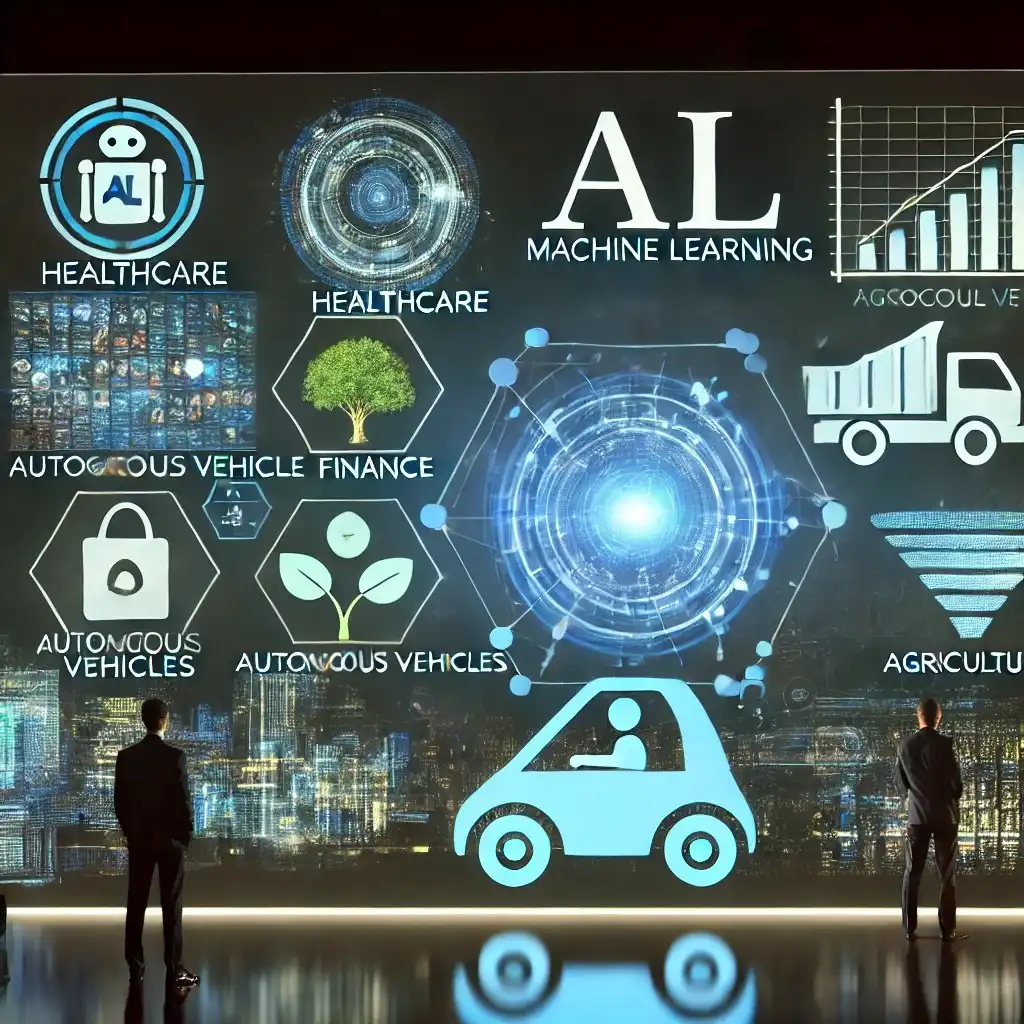In today’s highly competitive market, companies are constantly looking for ways to streamline operations, reduce costs, and improve efficiency. The Internet of Things (IoT) has emerged as a transformative technology in the logistics and supply chain industry, allowing businesses to connect devices, collect data, and make data-driven decisions. By integrating IoT into their operations, logistics companies and supply chain managers can gain real-time insights, optimize resources, improve asset tracking, and enhance overall visibility. This blog explores the many ways IoT is revolutionizing logistics and the supply chain, creating a smarter, more connected network that benefits both businesses and consumers alike.
Understanding IoT in the Context of Logistics and Supply Chain
The Internet of Things refers to the interconnected network of devices that communicate with each other over the internet. These devices can collect, share, and analyze data, allowing companies to gain insights into various aspects of their operations. In logistics and supply chain management, IoT applications involve using sensors, GPS tracking, RFID tags, and data analytics to monitor goods, vehicles, and inventory in real-time.
IoT provides logistics professionals with the tools to make informed decisions, reduce inefficiencies, and quickly respond to challenges in an increasingly globalized world. In fact, research shows that companies that incorporate IoT in their supply chains report higher efficiency, cost savings, and enhanced customer satisfaction.
Key Benefits of IoT in Logistics and Supply Chain
- Enhanced Asset Tracking and Visibility Asset tracking is one of the primary applications of IoT in logistics. By using GPS-enabled sensors and RFID tags, companies can monitor the exact location of their shipments in real-time, allowing for seamless asset tracking throughout the entire supply chain.
- Real-time Visibility: IoT devices provide end-to-end visibility, from the warehouse to the final delivery point. This real-time information helps companies reduce the risk of lost or stolen goods and ensures that the right goods reach the right destination on time.
- Improved Transparency: Real-time tracking also enables companies to be transparent with their customers. By sharing tracking information, customers can monitor the status of their orders and gain a sense of assurance. This transparency improves customer satisfaction and builds trust between companies and their clients.
- Predictive Maintenance for Vehicles and Equipment One of the biggest challenges in logistics is equipment downtime, which can cause significant disruptions in the supply chain. IoT sensors placed on vehicles and machinery can monitor performance, detect anomalies, and alert managers of potential issues before they become major problems.
- Reduced Downtime: IoT-enabled predictive maintenance reduces unexpected breakdowns by alerting operators about potential issues ahead of time. For example, sensors in trucks can monitor engine temperature, fuel levels, and tire pressure, notifying fleet managers of maintenance needs before they lead to costly delays.
- Extended Equipment Lifespan: Regular, data-driven maintenance ensures that vehicles and machinery operate optimally, reducing wear and tear. This approach extends the lifespan of the equipment, lowering the total cost of ownership and reducing capital expenditures.
- Optimized Route Planning and Fuel Efficiency Optimizing routes is crucial for reducing delivery times, minimizing fuel consumption, and improving customer satisfaction. IoT-powered GPS and route optimization algorithms allow companies to plan the most efficient paths for their vehicles.
- Real-time Route Adjustments: IoT allows for dynamic route adjustments by monitoring traffic, weather conditions, and potential hazards. If there’s an accident on a major route, the system can reroute vehicles in real-time to avoid delays.
- Reduced Fuel Consumption: By selecting shorter and more efficient routes, companies can reduce fuel consumption and lower carbon emissions, making their operations more environmentally friendly. This not only reduces operational costs but also aligns with the global push towards sustainability in logistics.
- Smart Warehousing and Inventory Management Warehouses are central to logistics operations, and IoT technology has made it possible to automate many of the processes within warehouses for improved efficiency.
- Inventory Tracking: IoT-enabled RFID tags allow companies to track inventory levels in real-time. When a product is removed from the warehouse, the system is automatically updated, ensuring accurate stock levels and preventing stockouts.
- Automated Sorting and Picking: IoT, in conjunction with robotics, can facilitate automated sorting, picking, and packing of goods, significantly reducing human error. IoT sensors track item locations, guiding robots or workers to the right items for order fulfillment. This automation speeds up order processing and ensures accuracy.
- Reduced Overstock and Stockouts: IoT-driven inventory management systems enable companies to monitor stock levels in real-time and adjust orders accordingly. This approach minimizes excess inventory and reduces the chances of stockouts, optimizing storage space and inventory costs.
- Improved Cold Chain Management In industries like food, pharmaceuticals, and chemicals, maintaining specific temperature and humidity levels during transportation and storage is crucial. IoT technology is a game-changer for cold chain logistics by ensuring that perishable items remain within safe conditions.
- Real-time Monitoring: IoT sensors monitor temperature, humidity, and other environmental conditions throughout the journey. This data is transmitted in real-time, allowing companies to take immediate action if conditions deviate from the required levels.
- Reduced Spoilage and Waste: With IoT, logistics companies can reduce the risk of spoilage by quickly identifying and addressing temperature deviations. For instance, if a sensor detects that a refrigerated truck is not maintaining the right temperature, the driver can be alerted to fix the issue, preserving the quality of the goods.
- Enhanced Security and Theft Prevention Logistics companies face significant losses from theft and tampering. IoT technology helps mitigate these risks by providing continuous monitoring and alerts in case of suspicious activity.
- Geofencing and Location-based Alerts: IoT enables geofencing, which creates virtual boundaries around specific locations. If a vehicle leaves a designated area, the system alerts managers in real-time, allowing them to take swift action.
- Remote Locking and Security Measures: IoT sensors can be integrated with remote locking mechanisms to prevent unauthorized access to goods. For instance, if a truck door is opened in an unauthorized area, an alert is sent to the central system, and the doors can be remotely locked.
- Data Analytics and Demand Forecasting IoT collects vast amounts of data, which can be analyzed to gain insights into demand patterns, optimize inventory, and predict future trends.
- Demand Forecasting: By analyzing data collected from IoT devices, companies can predict demand patterns with greater accuracy. This enables them to stock inventory accordingly, reducing the risk of overproduction or stockouts.
- Enhanced Decision-making: IoT data analytics allows companies to make data-driven decisions. For instance, by analyzing seasonal demand patterns, companies can allocate resources more effectively, optimize delivery schedules, and prepare for peak seasons well in advance.
- Customer Experience and Satisfaction Today’s consumers expect faster, more accurate deliveries and real-time visibility over their orders. IoT technology enables logistics companies to meet these expectations, enhancing customer experience and satisfaction.
- Accurate Delivery Times: IoT-powered tracking provides customers with accurate delivery estimates, improving satisfaction. Real-time tracking data allows customers to know exactly when their package will arrive, which is especially important in last-mile delivery.
- Efficient Returns Process: IoT can also streamline the returns process, enabling customers to initiate returns more easily and track their status. With IoT-enabled reverse logistics, companies can manage returned goods efficiently and re-integrate them into the supply chain with minimal delay.
Challenges and Considerations of IoT in Logistics and Supply Chain
While IoT offers many benefits, implementing it in logistics and supply chains is not without challenges:
- Data Security and Privacy: With the vast amount of data generated by IoT devices, security and privacy become critical concerns. Companies must invest in cybersecurity measures to protect sensitive data from cyberattacks and unauthorized access.
- Initial Costs and Infrastructure: Implementing IoT solutions requires an initial investment in sensors, connectivity, and data processing infrastructure. Small and medium-sized companies may find these costs prohibitive, though prices are expected to decrease as IoT adoption increases.
- Data Management: IoT generates vast amounts of data, which can be overwhelming for companies lacking robust data management systems. Effective data analysis tools are needed to transform raw data into actionable insights.
- Interoperability and Standardization: The IoT ecosystem consists of various devices and platforms, and achieving seamless interoperability can be challenging. Companies may face issues when integrating IoT solutions from different vendors.
Conclusion: The Future of IoT in Logistics and Supply Chain
IoT technology is revolutionizing logistics and supply chain management by providing unprecedented visibility, efficiency, and control over operations. As IoT adoption grows, companies can expect even more advanced applications, such as AI-driven predictive analytics, further automation, and more precise demand forecasting. While challenges like data security and initial costs remain, the benefits of IoT in improving logistics and supply chain efficiency are clear.
By embracing IoT, logistics companies can streamline operations, reduce costs, and provide a better customer experience. As technology advances, IoT will become an indispensable part of the logistics and supply chain, driving new innovations and making global supply chains more agile, resilient, and sustainable. For companies that invest in IoT now, the rewards are likely to be substantial, positioning them at the forefront of a smarter, more connected future.

